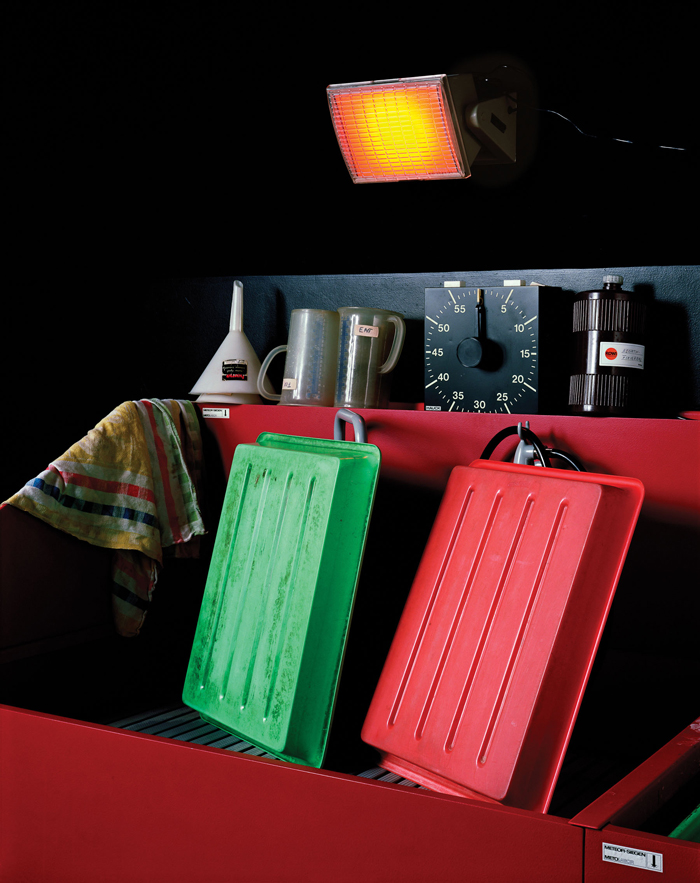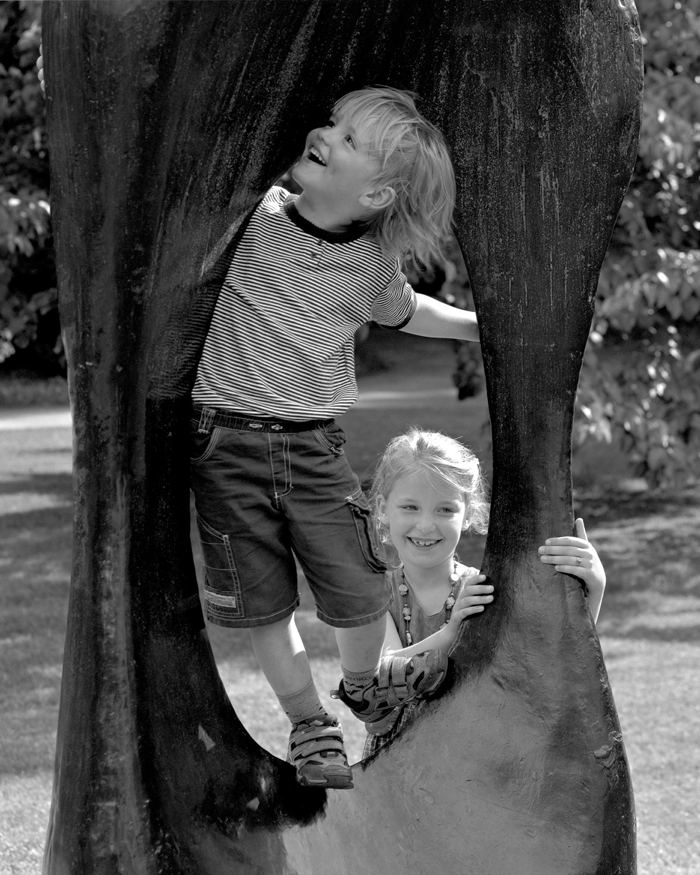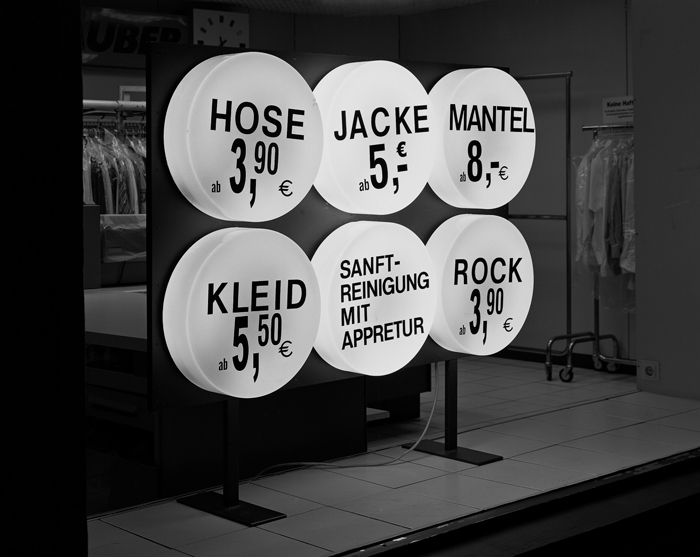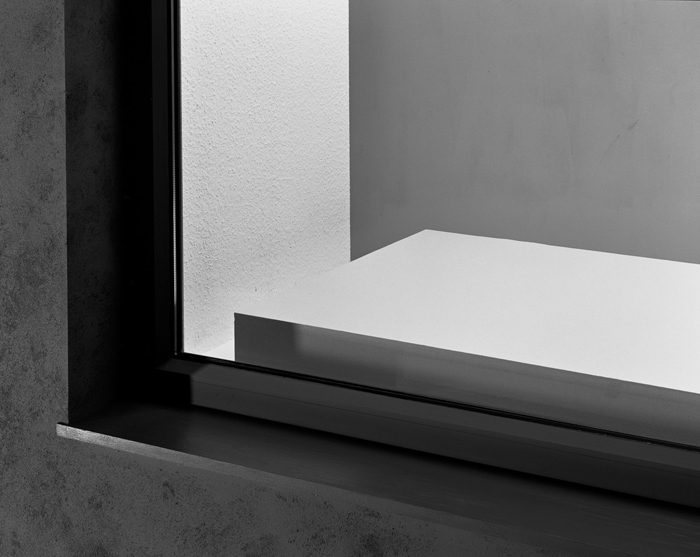There was a latent but permeating message in Christopher Williams’s fifth solo exhibition at David Zwirner Gallery: that the photographic activity is—more than ever—an instrumental and necessary lens through which to examine and uncover the myriad social and political forces that produce it. Though it might beleaguer a reluctant exhibition viewer-participant to arrive at this message from, for example, a formally and technically beautiful image of overly ripe apples set against a light blue sky, with water droplets glistening on the crimson, freckled skin (Bergische Bauernscheune, Junkersholz, Leichlingen September 29th, 2009, 2010), the eleven new works in the exhibition propose the requisite consideration of a photograph’s complete coming into being, from the entirety of the photographs’ production to the histories and trajectories of the subjects depicted in them.
The current exhibition is the twelfth in an ongoing project titled Dix-Huit Leçons Sur La Société Industrielle (Eighteen Lessons on Industrial Society). A line from the press release reads: “Screwing on our Soviet-made lens to photograph a riot in 1977, for example, or a nude comrade in the morning, it seemed agreed that photography, too, was part of the experiment.”1 Though it might be initially unclear which of the many revolutions or political unrests from 1977 that Williams specifically calls attention to, the reference points to the momentous concurrent events in Egypt (and the Middle East at large) in January and February of 2011. That the photographic apparatus is inextricably tied to these events is a symptom of its essential relationship to historical forces and movements—it is the common means by which the spectator and the public encounters the unfolding of history.
The multitude of electronic images streaming instantaneously from the riotous streets of Cairo during the months of Williams’s exhibition in New York are part of the same so-called “experiment”; added to that are the social networking platforms that further ignite participation and support. One thinks of the photographs depicting the spent cartridges of the tear-gas canisters with “Made in the USA” stamped on them—the many different yet similar versions of this image showed the cartridges held in the hands of the dissenters, positioned to display its origins; artifacts for the photographic witnesses. Yet if the origins of manufacture are analogous to intentionality and purpose, then the Egyptian masses that were the targets of this weaponry surely must have been bewildered by the shifting motives of the United States—a longtime ally to the dictator Hosni Mubarak before, but now taking on a differing role as an assertive supporter of his overthrow by the Egyptian populace.
I was preoccupied by these divergent thoughts while walking through Williams’s installation, checklist in hand, reading his typically long, genealogical titles that situate the depicted subjects/objects in their ontological trajectory, tracing the various points of origin that brought them into being. Williams’s photographs suggest an alternate notion of the “decisive moment,”2 one that functions on a historical scale: the act of photography coming into intersection with the artifacts on their temporal paths. The titles reveal the system of each particular photographs’ production and place the individual works within a constellation of references that belong to the larger conceptual framework of Williams’s ongoing project.
With each subsequent revision of Dix-Huit Leçons Sur La Société Industrielle, new images are appended to the expanding cache, multiplying the sphere of disparate, but nodal, constituents.3 Many of the photographs from previous revisions have become iconic emblems in the genre of self-reflexive photography, sometimes described as “photography on photography”—photographic works that reveal, in direct or oblique ways, the process of their own making.4 For example, Kodak Three Point Guide, © 1968 Eastman Kodak Company, 1968 (Meiko Laughing) Vancouver, B.C April 6, 2005 (2005) could be described as a signature work from Williams’s thirty-year output. This particular image contains dual references to the photographic medium—the “Kodak yellow” towel wrapped around the head of the young model, and the Kodak Three Point Guide coming into the frame—disrupting the otherwise pristinely constructed studio portrait.
This latest iteration of the project presented three somewhat loose categories of photographs in each of the three galleries: “The technical image, the window image, and the stereotypical or straight photography with a capital ‘P.’”5 The technical image included a picture of a cut-away Eastern German camera; an older model strobe light power pack, also German; a light meter (metering a model out of the focus range in the background); and an image of a photographic darkroom taken at a German school of communication. That all are elegiac depictions of outmoded and already obsolete photographic equipment is an obvious point, but what might they suggest about the conditions of the medium in the present moment? Williams alluded to a possible response in his gallery talk: “Now is… the time to understand what photography was, now that its all but gone in the way we used to think about it. There’s been so much written, but in some ways, that was premature.”

The course of photography’s technological trajectory has indeed shifted it paradigmatically, and as a consequence, the medium’s exponential absorption into the fabric of culture demarcates a defined break from what photography used to be. The work Fachhochschule Aachen, Fachbereich Gestaltung, Studiengang: Visuelle Kommunikation, Fotolabor für Studenten, Boxgraben 100, Aachen November 8th, 2010 (2010) purposefully shows the necessary tools and equipment for the production of light- and chemical-based photographs: a safelight, timer, processing trays, beakers, and developing tanks. The fact that these were not the tools used to make the photograph that presents them is a significant appraisal of the near-total technological break from “what photography was.” Thinking again of the countless images that streamed from cell phones and point-and-shoots from Cairo onto the online media outlets, they make a stark contrast to the obsolete instruments in Williams’s photographs. His deliberate, assiduously made works stand counter to an increasing, ever-present, torrential urgency to make known one’s seeing.

In the category of “stereotypical images” was a black-and-white photograph titled Femme, monument, 1970. Kunstgießerei Bonvicini, Verona. Bronze, 250 x 100 x 50 CM. Museum Frieder Burda, Baden-Baden. Bronze with black patina, signed and numbered with engraving ‘Miro EA 2’ June 9th, 2010 (2010). The image shows two young, blonde-haired children playfully climbing on a Miró sculpture, the sunlight dispersing from the pastoral surroundings to the sculptural contours of the foregrounded subjects. Perhaps there is an allusion or mimicry of post-war propaganda—for instance, the former GDR counteracting the democratic ideals of the DDR. To be sure, the sense of optimism in this image appears drolly tendentious and manufactured. It is a picture that could have been made in decades past, but details on the clothing worn by the children are telltale indications that this is a contemporary photograph. (The works in this new suite seemingly contain more manufacturing labels and tags than previous revisions.) The underlying nostalgia in this image is not only an elegy for the obsolescence of analog photography but also an indication that elaborately constructed photographic messages such as this one must now compete with dispatches more immediate and direct— including, of course, the rapidly amassing trove of materials exposed by WikiLeaks and “citizen journalism.” As the title of the exhibition and larger project suggests, these photographs are not just part of Williams’s “lesson”; moreover, they stand as an effectual prompt to reconsider our changing relationship and status to the photographic apparatus.

The third category of “window” images in the exhibition is another elliptical addendum to the sequence. Reinigung Ursula Schweyen, Lindenstr. 34, Köln, February 17th, 2010 (2010) is a black-and-white photograph of a dry cleaning storefront window, centrally showing an illuminated signage system that advertises the prices of their services, each item placed on a circular plastic form, the entire object appearing like a glowing minimal Pop sculpture. Two other works in this category depict a constructed prop of a window corner.The interior of one displays two cutaways of smaller window sections, exposing the layers of materials within; the interior of the window in the second photograph is left empty. This tautological folding back on the metaphor of the photographic “window”—one thinks of John Swzarkowski’s canonic 1978 exhibition “Mirrors and Windows”6 here—is yet again a subtle but manifestly present mnemonic framework for a self-reflexive encounter with the photographic image.
Williams has cited on a few occasions his interest in Vilém Flusser’s theories of the “photographic program,” a theory that totalizes the entirety of photographic processes, where the camera operator is but a small part in a larger all-encompassing mechanism: from the manufacture of the capture devices, to the photographic materials used, to the eventual outlets (newspapers, magazines, etc.) in which photographic images circulate. Objects’ origins of manufacture have been a central concern of Williams’s practice, and it is a concern that stands at almost an aesthetic opposite of the extensive informational schema that can be described as the whole of the work. Williams seems to self-consciously take on the challenge that Flusser proposes in “Towards a Philosophy of Photography,” where he writes, “Photographs permanently displacing one another according to a program are redundant precisely because they are always ‘new,’ precisely because they automatically exhaust the possibilities of the photographic program. This is therefore also the challenge for the photographer: to oppose the flood of redundancy with informative images.”7 Williams’s photographs reveal and inform certain aspects of his specific interests and obsessions (the Cold War, colonialism’s vestiges, outmoded photographic objects, etc.) but they also do something more: they engender an exploded view of the photographic experience, exposing the rhizomic mechanisms of the photographic images’ manufacture, implicating the viewer or user as part of the larger photographic universe.

This textual exposition is also part of the larger photographic program, as I am also a contributor (and participant) in the scheme of Williams’s work. All this would be remiss if the role these photographic works hold in the art market were not also considered—for they unquestionably occupy a place of value in that context. But that value can also be seen as the exchange value based on the proposition that the images invite us to question our encounter with photographic images (Williams’s and otherwise) as only a beginning encounter with a set of information (some limited and some extensive, though never complete) necessary for further investigation, potentially yielding alternate and perhaps greater insight and understanding. What Williams’s work proposes, it seems, is that the urgent and necessary task of the photographic user, more than ever, is to excavate and unearth the complex forces that lead to the photographic images’ making. The many poignant images of the spent tear-gas cartridges from the Cairo streets stood out amid the multitude of circulated images from the Arab Spring, their plea for inquisition piercingly palpable.
Arthur Ou is an artist and writer based in New York. His work has been featured in publications including Blind Spot, Art On Paper, North Drive Press, Art in America, and The Photograph as Contemporary Art, new edition (Thames and Hudson). His writings have been published in Aperture, Artforum.com, Afterall.org, Bidoun, Fantom, and Words Without Pictures.
